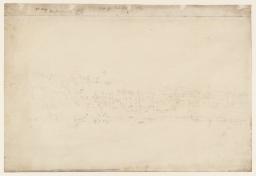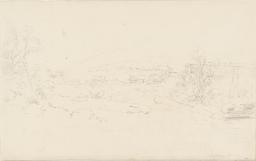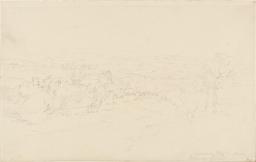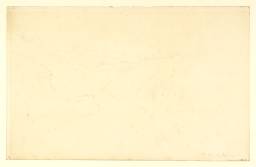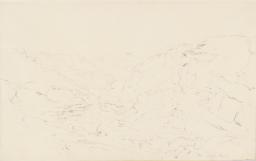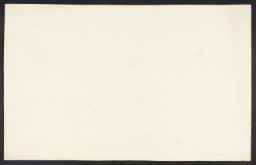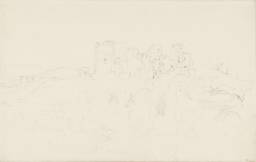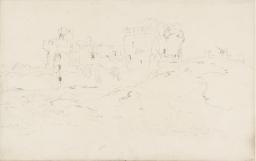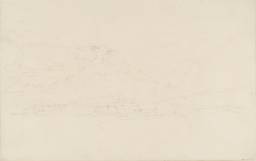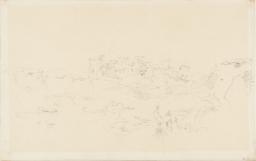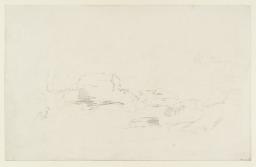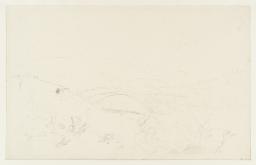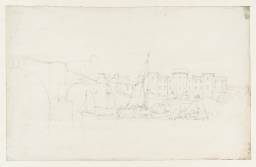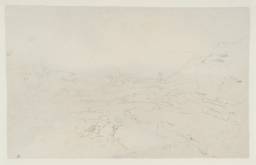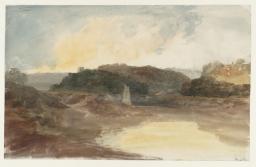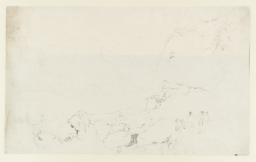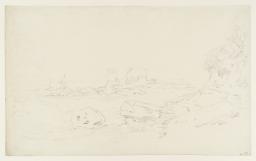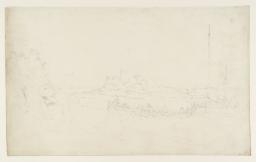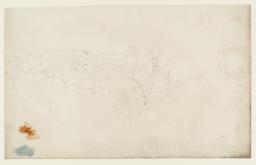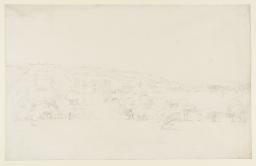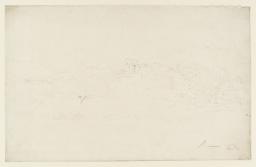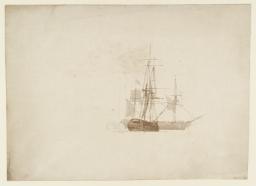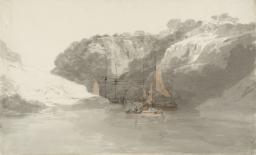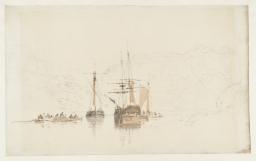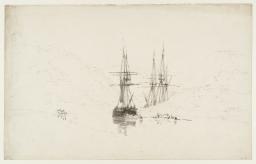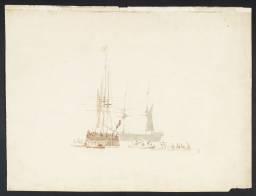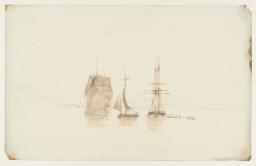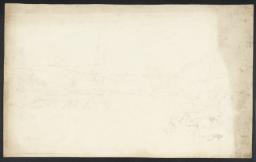Turner Bequest XLI 1–13, 18–32, 35–42
Sketchbook, disbound at an early date, the covers missing
42 leaves of white wove Whatman paper, 287 x 455 mm; watermark ‘1794 | J Whatman’
Numbered 209 as part of the Turner Schedule in 1854, and endorsed by the Executors of the Turner Bequest on D01629 (Turner Bequest XLI 1)
42 leaves of white wove Whatman paper, 287 x 455 mm; watermark ‘1794 | J Whatman’
Numbered 209 as part of the Turner Schedule in 1854, and endorsed by the Executors of the Turner Bequest on D01629 (Turner Bequest XLI 1)
Accepted by the nation as part of the Turner Bequest 1856
References
The large dimensions of this sketchbook – considerably larger than the contemporary Hereford Court sketchbook (Tate; TB XXXVIII) for instance – suggest that Turner took it with him to Wales in 1798 with the intention of making elaborate coloured studies in it in connection with commissions he had received. He perhaps even completed presentation drawings while he was on tour, for delivery on his return journey, though this would have been an exceptional procedure for him. It might, however, explain why the book was broken up so very early, as seems to have been the case (though it is not unique in this respect; see the Brocklesby Mausoleum sketchbook (Tate D05159–D05165, D08277; Turner Bequest LXXXIII 1–7, CXXI U).
The commission from Anthony Bacon for views of the ironworks at Cyfarthfa that he had inherited from his father in 1793 and sold to Richard Crawshay in 1794, was apparently a prime motive for Turner’s journey, together with Sir Richard Colt Hoare’s request for views of Hampton Court, Herefordshire. The drawings Turner made of the works on D01629–D01632 (Turner Bequest XLI 1–4) are thorough records of the buildings and their site. It is curious that there is no documentation of any finished views, though an elaborate watercolour study on a separate sheet showing the interior of a foundry has been associated with Cyfarthfa; see Tate D00873 (Turner Bequest XXXIII B). The remaining leaves were used in a limited area of South Wales and the Severn Estuary, between the valley of the Usk and the south coast, but also including the Avon Gorge in Somerset, which Turner had explored on his first visit to Bristol in 1791; see the Bristol and Malmesbury sketchbook (Tate; Turner Bequest VI).
One study (D01670; Turner Bequest XLI 37) has been thought to show the Needles, off the western tip of the Isle of Wight, which Turner had visited in 1795, on a tour that resulted, among other works, in his first exhibited oil painting, Fishermen at Sea of 1796 in which a view of the Needles has traditionally been thought to be incorporated (Tate T01585).1 The identification is not convincing, however, and it is more probable that the view is of somewhere on the south Welsh coast. A particularly impressive group of drawings in this book is the series of studies of shipping, probably on the Severn and the Wye, and in the Avon Gorge, some of which are coloured. A few subjects have been tentatively identified as Goodrich Castle, overlooking the Wye, a river whose scenery had been particularly recommended to travellers in search of the Picturesque by the Rev. William Gilpin in his Observations on the River Wye ... Relative Chiefly to Picturesque Beauty (London 1782); Goodrich was singled out for special commendation.
Technical notes
How to cite
Andrew Wilton, ‘Cyfarthfa Sketchbook 1798’, sketchbook, May 2013, in David Blayney Brown (ed.), J.M.W. Turner: Sketchbooks, Drawings and Watercolours, Tate Research Publication, April 2015, https://www

